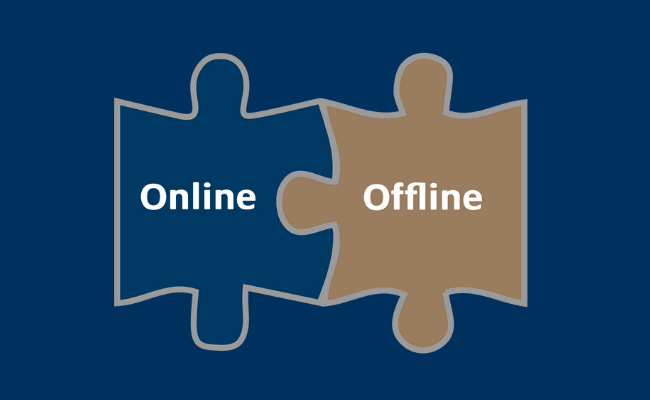
You have stopped by the mall to look for a new pair of jeans. You pull out your smartphone and type in “jeans” to Google search. The search results return with various online retailers that carry different brands of denim pants.
After passing by an ad for JCPenney, suddenly your phone buzzes, and the top result is not a search engine but a push ad. There’s an upcoming sale at your local mall, and you get directions to the nearest location.
You quickly make a purchase and go pick up your new pants at one of the store locations. This may seem like something out of science fiction but it’s actually closer than we may think.
What is O2O and Why is it So Popular Right Now?
O2O (online-to-offline) is a term used to describe the concept of bridging the gap between offline and online commerce.
The goal of O2O is to allow consumers to find exactly what they want in an efficient manner, whether that involves search engines such as Google or Bing, social media websites such as Facebook and Instagram, or mobile applications such as Uber.
The online and offline environments are combined when one makes a purchase online, and receives that good or service in-person, whether it is a pair of jeans or an amusement park experience. O2O has seen a massive surge in popularity over the last decade and it only seems to be continuing that trend into the next decade as well.
O2O Trends
While there are many different trends that fall under the O2O category, here are five of the biggest O2O trends.
1. Push Notifications for Offline Businesses
We have already seen push notifications being used by apps such as Uber and Lyft to either send information about nearby drivers or tell users when their ride has arrived.
While this has worked out pretty well for these types of services, it is unlikely that offline businesses will need to send push notifications in order to notify customers when they are open or closed.
However, current shifts in the way offline businesses function is stirring a need for offline businesses to use push notifications as well.
With Amazon’s purchase of Whole Foods and plans to use them as an O2O location, we might start seeing push notifications for offline businesses that want to reach their customers.
If a user walks by one of these locations and sees a notification on their phone about the daily specials, they may be inclined to pick something up and save some money.
2. AI Assistants for Retail Customers
One of the ways that eCommerce companies such as Amazon are trying to bridge the gap between online and offline commerce is by offering an AI assistant.
The goal of these assistants is not only to make it easy for consumers to purchase items online but also give them recommendations on what they should pick up in-store.
In addition, these assistants may come in the form of a chatbot that can be found on social media websites such as Facebook and Instagram.
Users can go onto these websites and get information about the items they are interested in, along with any relevant information such as shipping times and pricing.
These assistants will also be able to bridge a gap that has always been present in retail shopping: getting suggestions on what they should pick up in-store.
We are already seeing more companies encouraging their users to make purchases online and pick up in stores, and it is likely that this trend will continue.
3. O2O Services for Local Businesses
As O2O platforms become more pronounced, local businesses are also beginning to take advantage of them. Companies such as DoorDash offer discounts when customers order food or drinks through their mobile app/website and pick it up themselves.
Other companies such as Grubhub offer promotions to users for purchasing food online and picking it up themselves.
Now we are already seeing more local businesses taking advantage of O2O platforms in order to reach customers who are increasingly using these technologies to make purchases.
4. Machine Learning for Search Results
Search engines are critical in O2O. Using machine learning, search engines provide more accurate search results.
With more accurate search results comes better recommendations within specific categories, and search engines can predict how much a user may want to spend on certain items.
For example, if a person is looking for a new pair of running shoes, the search engine is able to tell them about the latest pairs that are coming out that they may want to purchase or provide similar types of sneakers that they could pick up instead.
The increased accuracy of search engines due to machine learning is improving the customer buying experience, increasing sales, and decreasing the rate of returns due to accurate orders.
5. Amazon Go
There is no doubt that Amazon has had a massive influence on how we shop today, especially with their introduction of Amazon Go. This new concept uses machine learning to track when customers pick up items off the shelves and charge them accordingly.
There is no need for cashiers or registers in these stores, just turnstiles that act as the only real indicator that you have entered an Amazon Go store.
While this technology has not reached other grocery stores yet, it is likely that we will see it become more widespread, not only for grocery shopping, but all across the retail sector.
With companies like Amazon leading the way, we can expect to see more innovations taking place with AI assistants, O2O services for local businesses, and improved search engine results powered by machine learning.
One thing remains certain: O2O is a force that will continue to shape the world around us.
